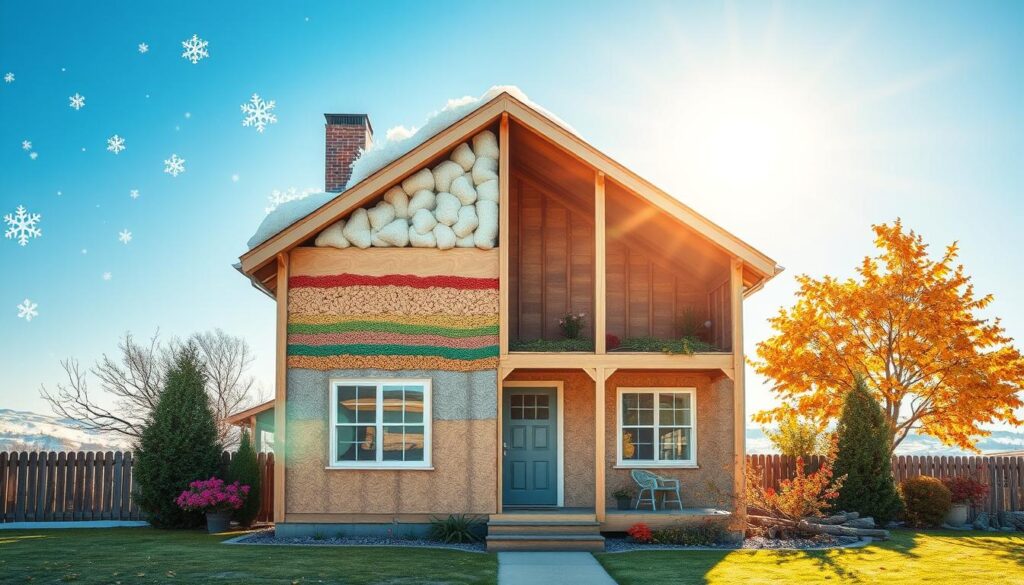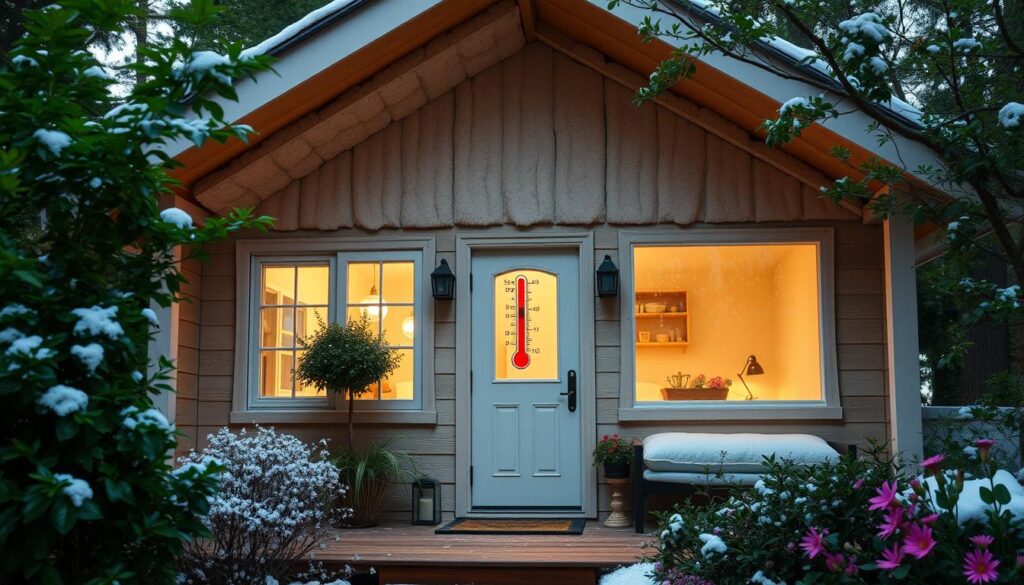Utility bills can be a significant expense for homeowners in the Hampton Roads, Virginia region, particularly with its varied climate. However, you can reduce these costs year-round by properly insulating your home. Insulation helps maintain comfort and saves energy, leading to lower monthly bills.
In Hampton Roads, effective insulation prevents heat from escaping in winter and entering in summer, keeping your home warm during cold months and cool during hot ones. This reduces the load on your HVAC system, saving money on energy bills—a smart move for local homeowners seeking savings.
In this article, we’ll explore various insulation materials and their effectiveness for Hampton Roads’ climate. We’ll discuss installation methods to maximize energy savings year-round. Additionally, we’ll highlight the financial benefits of quality insulation, such as potential tax incentives and long-term savings specific to the region.
Understanding Home Energy Loss and Its Impact on Bills
Keeping your home comfortable and energy-efficient is key for many. But, did you know a lot of your home’s energy can be lost? This happens through heat loss, air leaks, and energy waste. These issues can really raise your utility expenses, making your bills higher each month.
Common Areas Where Homes Lose Energy
Most homes lose energy in the attic, walls, and foundations. If these areas aren’t well-insulated, warm air escapes in winter and cool air in summer. This means you use more energy and pay more for it.
- Attic: Up to 25% of a home’s heat loss occurs through an uninsulated or poorly insulated attic.
- Walls: Exterior walls account for up to 35% of a home’s total heat loss, especially if they lack proper insulation.
- Foundations: Uninsulated foundations and crawl spaces can contribute to as much as 20% of a home’s energy loss.
The Financial Cost of Poor Insulation
Poor insulation can cost a lot. Homeowners with bad insulation face high utility bills. Energy waste can cost hundreds or thousands of dollars a year. This can add up fast, making it crucial to fix energy loss with good insulation and energy-saving home upgrades.
“Improving home insulation can save homeowners up to 20% on their annual energy bills.”
Types of Home Insulation Materials and Their Effectiveness
Choosing the right insulation can greatly improve your home’s energy use and lower bills. Let’s look at the different insulation materials and what makes them special.
Fiberglass is a favorite because it’s affordable and easy to find. It blocks heat well, making it good for walls, attics, and crawl spaces. But, it can be itchy to install and may lose some of its insulating power over time.
Cellulose is a green choice made from recycled stuff. It keeps heat in well, especially in tight spaces, and can fill small gaps. But, it doesn’t do well with moisture, which can hurt its insulating job.
- Spray foam insulation is top-notch at keeping air in and out. It’s great for walls, attics, and crawl spaces, offering top insulation and keeping moisture out.
- Mineral wool comes from natural rock or slag. It’s fire-safe, strong, and doesn’t get too wet. It also helps block sound and is less wet-sensitive than other insulations.
| Insulation Type | R-Value Range | Pros | Cons |
|---|---|---|---|
| Fiberglass | R-3 to R-4 per inch | Affordable, widely available | Can be itchy during installation, may settle over time |
| Cellulose | R-3.2 to R-3.8 per inch | Eco-friendly, good thermal performance | Susceptible to moisture, can be messy during installation |
| Spray Foam | R-5 to R-7 per inch | Excellent air-sealing, high insulation value | Costlier than other options, can be challenging to install |
| Mineral Wool | R-3.1 to R-4.2 per inch | Fire-resistant, good sound-dampening | Slightly more expensive than fiberglass |
When picking insulation, think about your climate, budget, and where you need it most. Talking to a pro can help you choose the best insulation for your home. This will make your home more energy-efficient and save you money in the long run.
How Proper Insulation Works to Reduce Energy Consumption
Insulation is key to keeping your home at a comfortable temperature. It helps cut down on energy use and lowers your bills all year. It works by stopping heat from moving through conduction, convection, and radiation.
Heat Transfer Prevention Methods
Insulation acts as a shield, slowing heat transfer between inside and outside. This keeps your home warm in winter and cool in summer. It means you use less energy and save money.
R-Value and Its Significance
The R-value shows how well insulation works. A higher R-value means better insulation. Picking the right R-value for your area and home is key to saving energy.
Air Sealing Benefits
Good air sealing is also vital for saving energy. It stops air leaks and drafts. This boosts your home’s thermal resistance and makes it more comfortable.
Learning about insulation and using the right methods can greatly reduce your energy bills. It also helps the environment.
Key Areas in Your Home That Need Insulation
Improving your home’s energy efficiency and lowering utility bills starts with smart insulation. While many focus on the attic insulation, other areas like wall insulation, basement insulation, and crawl space are just as important. They all play a role in how much energy your home uses.
The attic is a major source of heat loss in homes. Proper attic insulation helps keep warm air inside, saving energy and making your home more comfortable.
- Walls: Exterior walls lose a lot of energy. Adding wall insulation makes your home warmer in winter and cooler in summer.
- Basement and Crawl Spaces: These areas are often ignored but can waste a lot of energy. Insulating them helps your heating and cooling systems work less hard.
- Floors and Ceilings: Insulating these areas, especially those above unheated spaces, boosts your home’s energy efficiency.
By focusing on these key areas, you can make your home more energy-efficient. This leads to long-term savings on energy bills and a more comfortable living space.
| Area | Importance of Insulation | Potential Energy Savings |
|---|---|---|
| Attic insulation | Prevents heat transfer between the living spaces and the attic | Up to 20% reduction in heating and cooling costs |
| Wall insulation | Improves the thermal performance of exterior walls | Up to 15% reduction in heating and cooling costs |
| Basement insulation | Reduces heat loss from the living spaces to the basement | Up to 10% reduction in heating and cooling costs |
| Crawl space | Prevents air infiltration and heat transfer through the floor | Up to 8% reduction in heating and cooling costs |
Maximizing Insulation Energy Savings Through Strategic Installation
Improving your home’s energy efficiency starts with the right insulation. Choosing between insulation contractors and DIY insulation affects your long-term savings.
Professional vs DIY Installation
DIY insulation might save money, but professionals offer unmatched expertise. They ensure the insulation works best, saving you energy and money.
Experts spot air leaks and other issues that homeowners might miss. They use the right tools safely and efficiently, avoiding damage.
Optimal Thickness Requirements
The right insulation thickness is key for energy savings. It depends on your climate, home areas, and insulation type. An energy audit finds the best insulation thickness for your home.
Too little insulation wastes energy and raises bills. Too much can be inefficient. Experienced insulation contractors or following guidelines help find the perfect balance for savings.
Seasonal Benefits of Quality Insulation
Quality home insulation brings big benefits all year. In summer, it keeps your home cool by blocking the sun’s heat. This means your air conditioning works less, saving you money and making your home more comfortable.
In winter, insulation keeps warm air in and cold air out. This makes your home cozy and warm, without needing to use a lot of energy. You’ll spend less on heating, making your home more energy-smart.
Insulation is key for keeping your home comfy and energy-efficient all year. It helps keep your home at a steady temperature, lowers HVAC work, and saves you money on energy bills in the long run.
| Season | Insulation Benefits |
|---|---|
| Summer | Blocks heat, keeps interior cool, reduces air conditioning strain |
| Winter | Traps warm air, maintains cozy environment, lowers heating costs |

“Proper insulation is the key to year-round comfort and energy efficiency in your home.”
Cost Analysis: Initial Investment vs Long-term Savings
Getting quality home insulation might cost you upfront, but the long-term gains are big. We’ll look at the average costs, expected ROI, and tax breaks to guide your choice.
Average Installation Costs
The price to install insulation changes based on your home’s size, insulation type, and labor. For a 1,500-square-foot home, expect to spend $1,500 to $6,000. An energy savings calculator can give a closer estimate for your home.
Expected Return on Investment
Insulation is a smart investment that pays off over time. You could see a 100-200% return on your investment, depending on energy costs and climate. This means you might get your money back in 5-10 years through energy savings.
Available Tax Incentives
- Federal tax credits: You might get up to a $500 tax credit for certain insulation upgrades.
- State and local rebates: Many places offer energy rebates for making your home more energy-efficient.
- Utility company incentives: Some providers give extra discounts for insulation and other energy-saving steps.
Think about the initial insulation costs, long-term energy savings, and tax breaks. This will help you find the best insulation for your home and budget, ensuring a good ROI.
Signs Your Home Needs Better Insulation
Keeping your home well-insulated is key for comfort and saving energy all year. But, spotting when your insulation isn’t doing its job can be tricky. Knowing the signs can help you see if your home needs better insulation.
Feeling cold air around windows, doors, or outlets is a big clue. It means your insulation isn’t stopping air leaks. Also, if your rooms don’t stay at the same temperature, it could mean your insulation is letting heat escape.
Seeing your energy bills go up, especially when it’s cold or hot outside, is another warning sign. If your bills seem too high for your home, your insulation might not be working right. This leads to using more energy than needed.
Ice dams on your roof are another sign of bad insulation. These icy ridges block water flow and can harm your home’s interior.
If you see any of these signs, it’s time to check your insulation. Upgrading can make your home more energy-efficient, lower your bills, and keep you cozy all year.

| Sign of Poor Insulation | Potential Impact |
|---|---|
| Drafty rooms | Uncomfortable indoor temperatures, higher energy bills |
| Uneven temperatures | Inconsistent comfort levels, inefficient heating/cooling |
| High energy bills | Excessive energy consumption, financial strain |
| Ice dams | Water damage, roof and gutter issues |
Maintenance Tips for Insulation Longevity
Keeping your home’s insulation in top shape is key for saving energy and staying comfortable. Here are some easy tips to help:
Check your insulation often for damage like moisture, pests, or squishing. Fix any problems quickly to keep it working well. Good insulation upkeep is vital for its heat-saving abilities.
It’s important to control moisture to keep your insulation lasting longer. Make sure attics and crawl spaces have good airflow to avoid moisture. Also, fix any water leaks to stop moisture control issues.
Protect your insulation from pests by sealing holes and checking for signs of pests. Pests like rodents and insects can harm your insulation, making it less effective. Taking care of pest prevention helps keep your insulation strong.
FAQ
What are the key benefits of proper home insulation?
Proper home insulation can lower your energy bills all year. It stops heat from escaping and makes your home more energy-efficient. This keeps your home at a comfortable temperature, saving you money on heating and cooling.
Where do homes typically lose the most energy?
Homes often lose energy in the attic, walls, and foundations. If these areas aren’t well-insulated, you’ll pay more for utilities.
What are the different types of insulation materials and their effectiveness?
Common insulation materials are fiberglass, cellulose, spray foam, and mineral wool. Each has its own strengths, installation ways, and R-values. The R-value shows how well it blocks heat.
How does insulation work to reduce energy consumption?
Insulation stops heat from moving through conduction, convection, and radiation. The R-value of the insulation material is key. It shows how well it blocks heat. Proper air sealing also boosts your home’s energy efficiency.
Which areas of the home need to be insulated?
Insulate the attic, walls, floors, and basements. Proper insulation in these areas saves energy and makes your home more comfortable.
Should I hire a professional or do it myself when installing insulation?
Professional installers use the right techniques and ensure the insulation is thick enough. DIY can save money if you have the skills and tools. Think about safety, efficiency, and long-term performance to decide.
How does insulation provide year-round benefits?
Good insulation keeps your home cool in summer and warm in winter. This reduces your HVAC system’s work and keeps the temperature steady. You’ll save energy and stay comfortable all year.
What is the cost-benefit analysis of investing in home insulation?
Insulation costs a lot upfront, but it saves money in the long run. You can get back your investment through lower bills and tax breaks.
How can I tell if my home needs better insulation?
Look for drafts, uneven temperatures, high bills, and ice dams. An energy audit or a pro’s advice can show if your insulation needs a boost.
How can I maintain the effectiveness of my home’s insulation over time?
Keep your insulation effective by controlling moisture, stopping pests, and checking it regularly. Follow the manufacturer’s advice and fix problems fast to keep your insulation working well.


